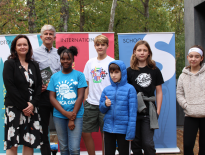PRESS RELEASE: 2019 Stephen R. Kellert Biophilic Design Award Winners Announced
November 20, 2019 (ATLANTA): The International Living Future Institute (ILFI) honored the late scholar and Yale University social ecologist Stephen R. Kellert’s legacy at the third annual Biophilic Design Award last night with a special award ceremony hosted by Interface during the 2019 Greenbuild International Conference and Expo. The ceremony was held at the Georgia Institute of Technology’s new Kendeda Building for Innovative Sustainable Design, the first building of its kind aiming for Living Building Challenge certification in the Southeastern United States.
The award is in recognition of achievements in the built environment that demonstrate Kellert’s understanding of the human/nature connection. This year, award-winners were selected from three different project categories: Building Scale, Interior/Renovation, and Community/Urban Scale.
The winners from each project category are as follows:
Building Scale: Heart of School: A Bamboo Cathedral at Green School Bali, Bali, Indonesia
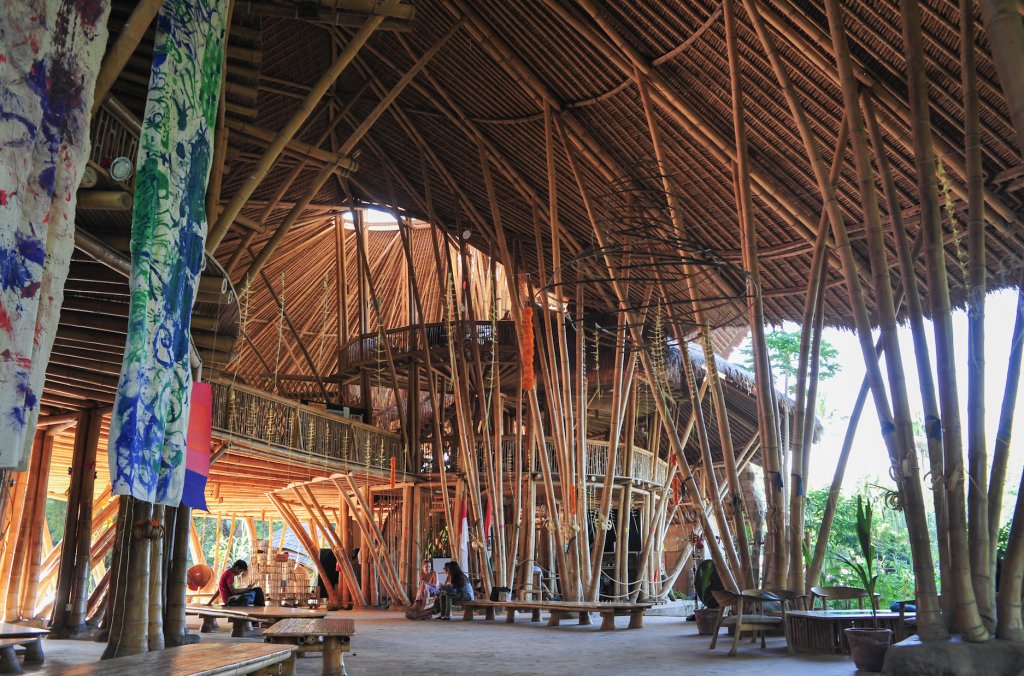
Heart of School: A Bamboo Cathedral at Green School Bali was selected by the judges as the winner in the Building Scale category. A bamboo cathedral inspired by the spiral movements of nature in the Fibonacci sequence, the structure impressed judges with its vernacular architectural style that spoke to the richness of biophilic design. As the Heart of the School, the building forms the central core of Green School, with a roof shaped in the form of three spiraling nautili.
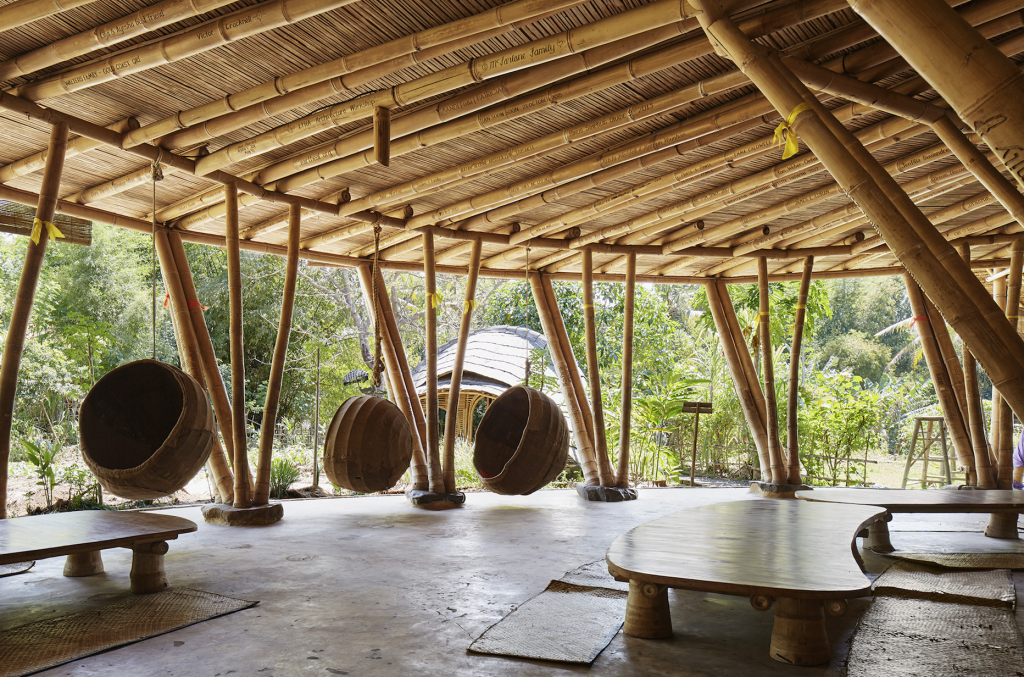
The jury found the school to be an exceptional international biophilia project that embodies the spirit of place. An incredible example of bamboo architecture, the open-air concept and thatched roof create a cathedral that is structured, yet organic. This use of local natural materials creates an open-air environment that suits the climate and contributes to a strong local vernacular. By offering students a place to learn, connect, and be immersed in nature, the younger generation is learning a new way of living and honoring the natural world. In this way, the school is not only a place where teaching happens, but the building itself becomes an integral part of the learning process.
As both visually impressive and environmentally conscious, the project fully exemplifies Kellert’s vision for a biophilic and sustainable world. Though a decade old, awarding this project certainly represents the role of recognizing biophilic design that stands the test of time.
Interior/Renovation: The Phenix, Montreal, Québec, Canada
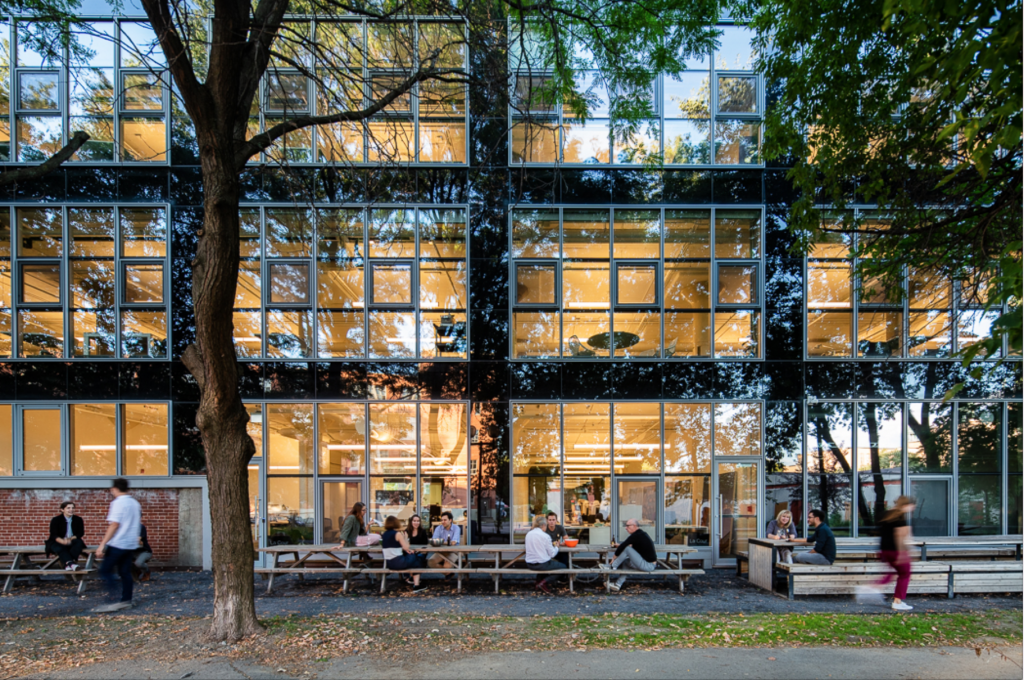
The Phenix Building was retrofitted by Lemay Architectural Firm to centralize its 350 employees in Montreal, Canada. The formerly industrial 95,000 sq. ft. building, built in 1950, was originally used as a distribution center for the Simpsons department store catalog. The retrofit of this existing industrial structure as its name suggests is the revival of a healthy, efficient and inspiring building.
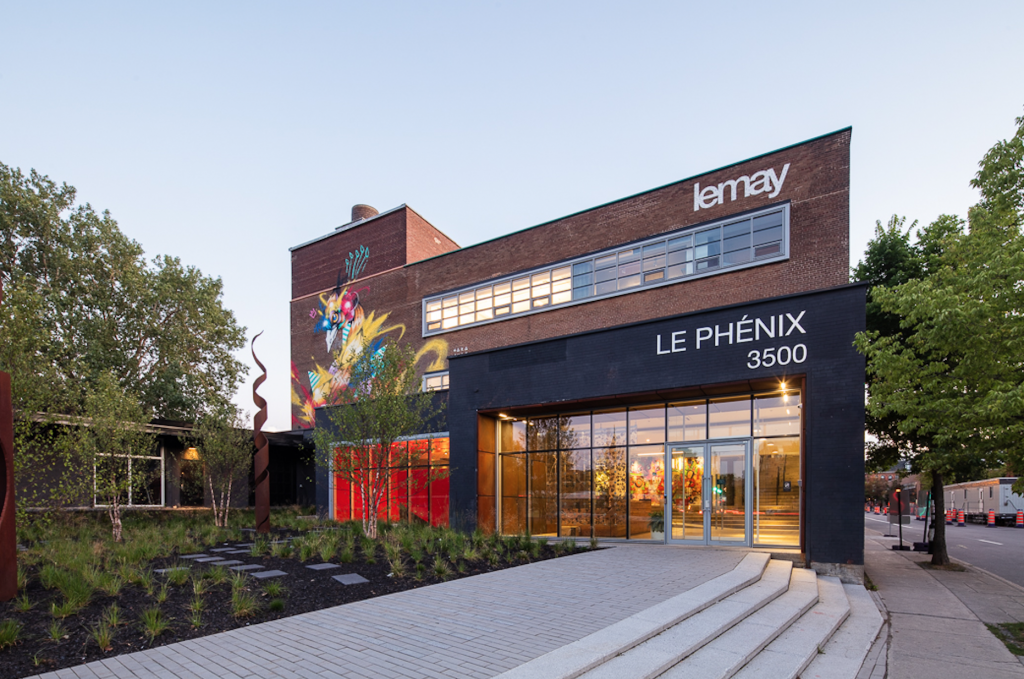
Through the project, Lemay clearly determined its desire to go as far as possible to ensure the efficient use of resources, promote green transportation, enhance health and wellness, and guarantee that employees were connected to nature. The jury agreed that The Phenix shines for its environmental performance-based strategies and its incorporation of biophilic design elements to create an inviting and inspirational workplace.
The spirit of place can be felt as one enters the building through the garden and is greeted by the dynamic mural on the facade. Indoors, lighting and plant features surround the interior perimeter and complement the lounge’s living wall. The variety and diversity of biophilic patterns, local artwork, and natural colors are well designed and translate into a thoughtful project.
Community/Urban Scale: Growing a Biophilic City in a Garden – Singapore
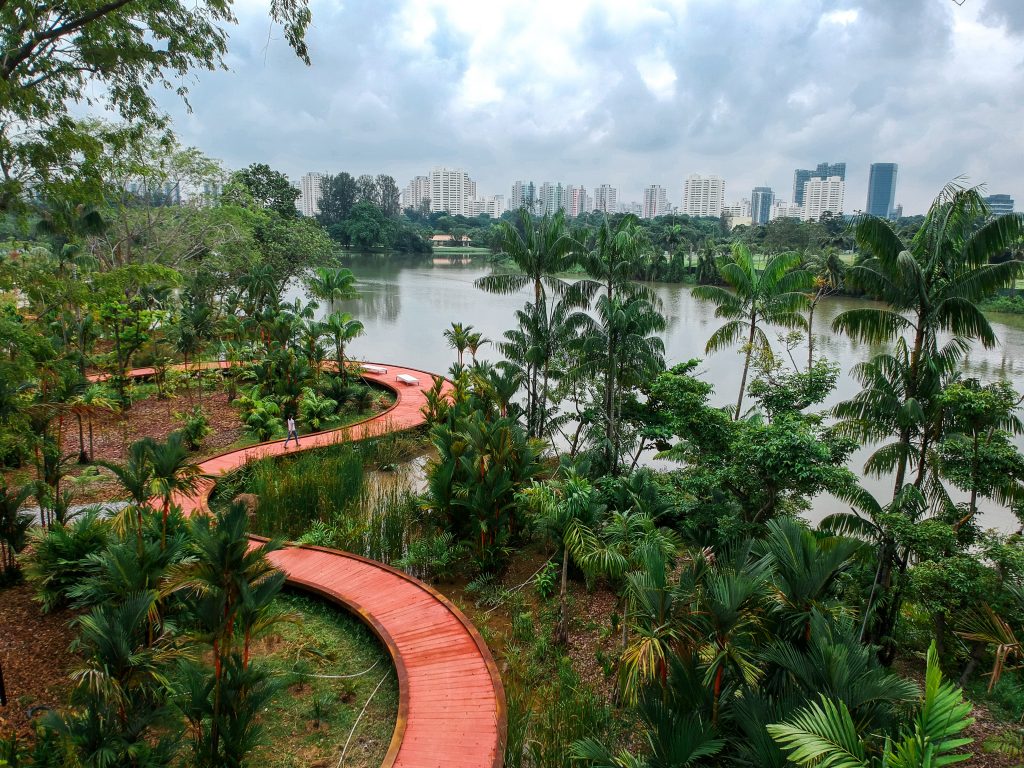
Singapore’s Learning Forest and Lakeside Garden exemplify the city’s commitment to creating a biophilic city in a garden, where inhabitants live amidst a sustainable and biologically diverse urban ecosystem.
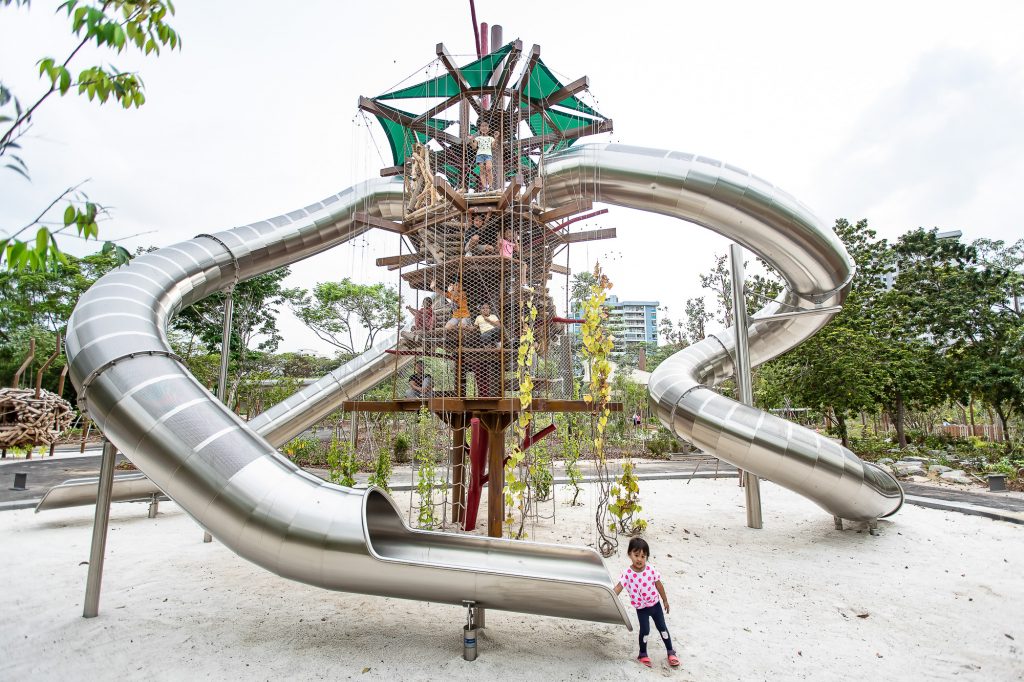
The jury found the project to be an outstanding multi-functional park and ecosystem that serves as an example for other cities to learn from. The Learning Forest and Lakeside Garden showcase the potential of an urban application of biophilia that is geared towards educating students.
No other city has done as much to advance the vision and practice of biophilic cities as Singapore. The city-state has been at the forefront of linking people with nature through a vision supported by policy.
Top contenders and honorable mention for this year’s award include:
Chatham University Eden Hall Campus, Richland Township, PA, USA
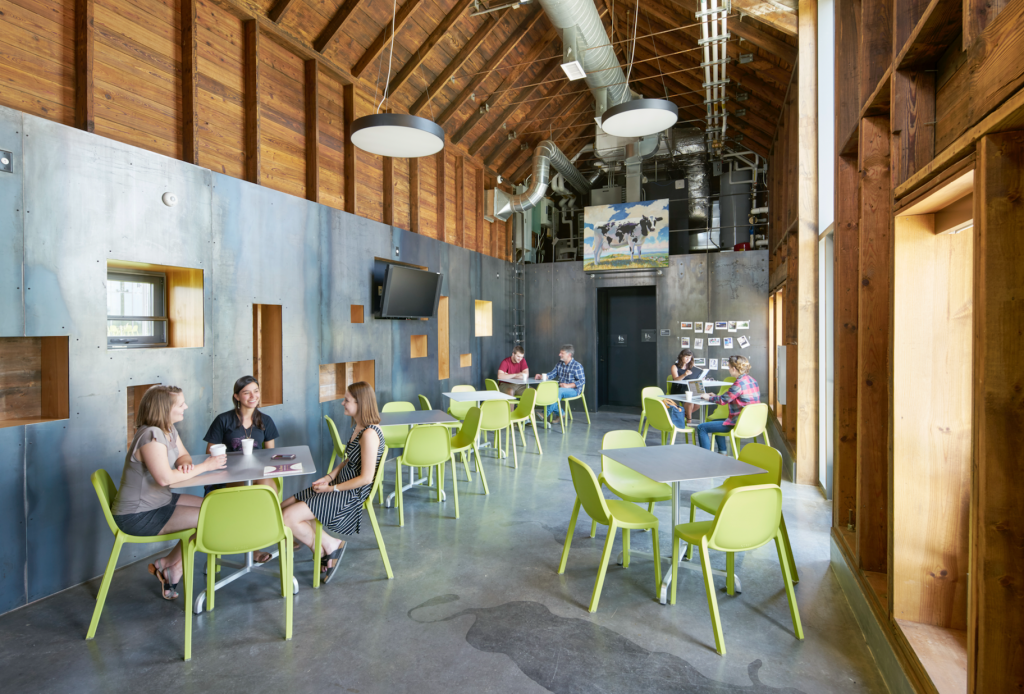
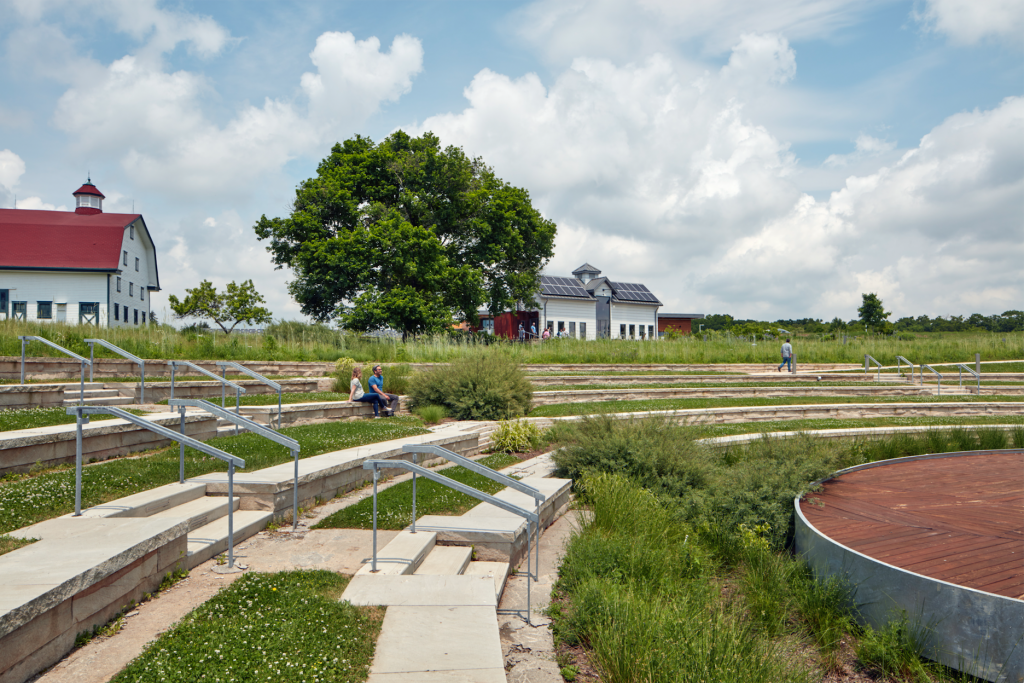
An incredibly thoughtful project, the jury praised the Eden Hall Campus for its impressive, comprehensive, and holistic design. All of the design elements come together to create a wonderful biophilic campus. The fostering of human connection to the natural world is evident from the smallest of details and patterns to the larger scales and systems of the project. The campus features a number of biophilic design elements including natural lighting and ventilation, earth tones, natural shapes and forms, natural materials and metals that patina over time, twenty-four rain gardens, on-site annual bird count stations, and pathways that reveal the geomorphology of the surrounding land.
The blurring of indoor/outdoor boundaries throughout the multiple buildings on-site, along with an incredible outdoor amphitheater, allows nature to creep in. Through the team’s careful consideration of the land, the project embodies the spirit of place and preserves the site’s pastoral history.
Laity Lodge, Leakey, TX, USA
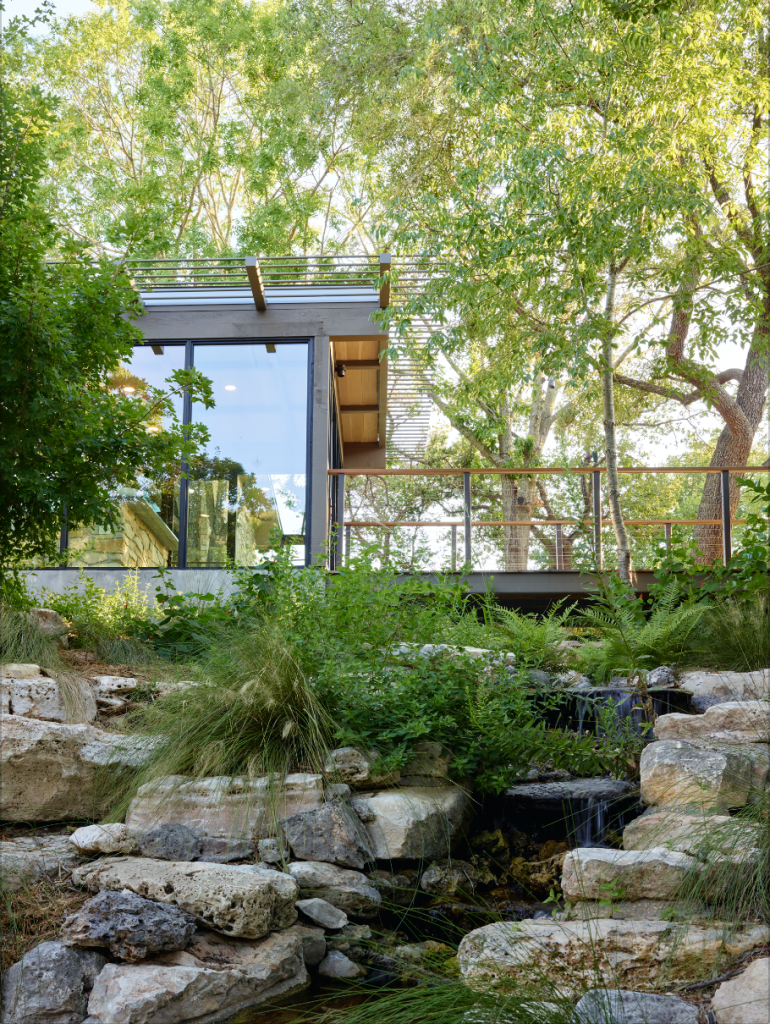
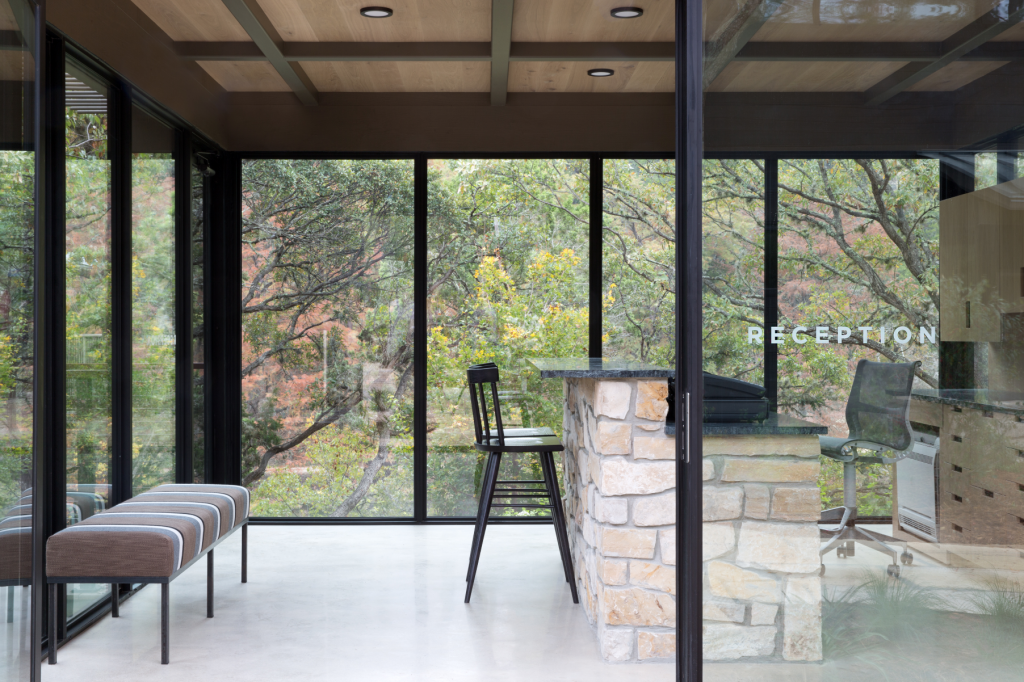
Positioned along the emerald waters of the Frio River within the steep limestone canyon walls of Texas Hill Country, Laity Lodge is a retreat center like no other. Founded in 1961, the mission of the Lodge is to reinforce guests’ connection to themselves, each other, and the divine through deep and meaningful experiences with the natural world. Inspired by the intimate scale and natural features of the site, the design team’s primary goal was to create a place that could not be built anywhere else, for anyone else.
Honorable Mention: Womb with a View, Cannon Beach, OR, USA
Derived from the thoughtful listening of the land, the arrangement and sensitive fitting-in of new structures on an existing retreat site create nestled moments that still the senses and connect occupants to the beauty and grace of nature. Laity Lodge’s use of natural and indigenous building materials reflect local resources and honoring of place: cedar plank siding that will patina over time, corten metal panels, limestone finishes, slate finishes, and natural stone tile. Additionally, the project was intended to be a “sponge” for collecting and cleaning runoff before reaching the river below, a unique integration of on-site water management and biophilia.
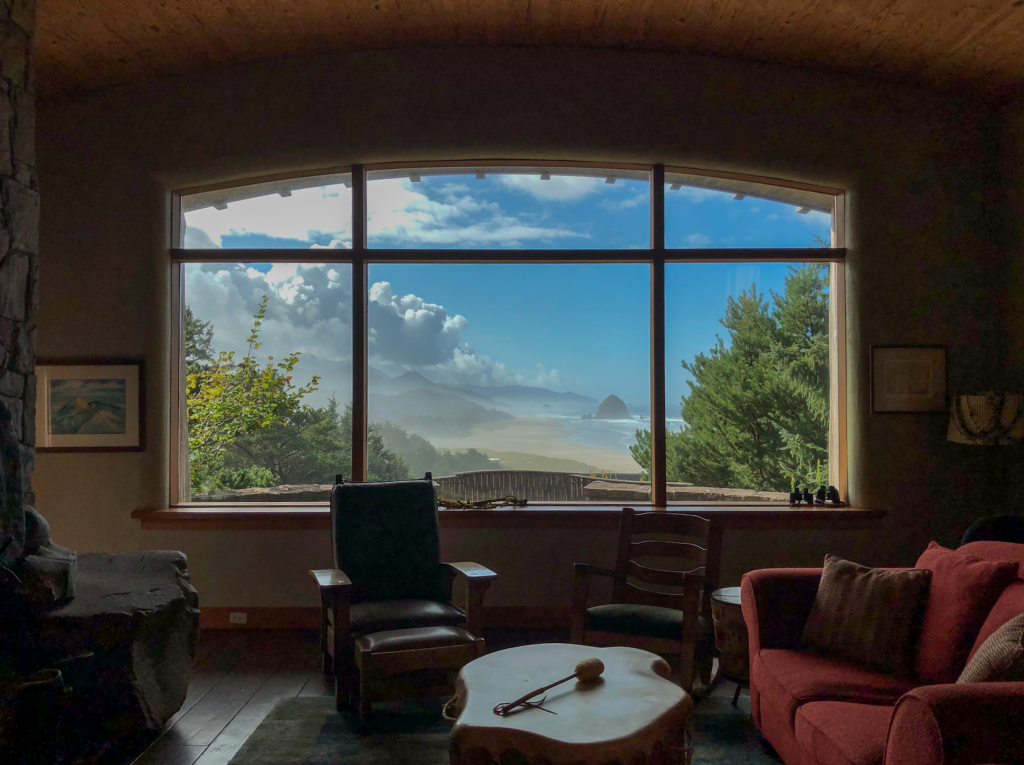
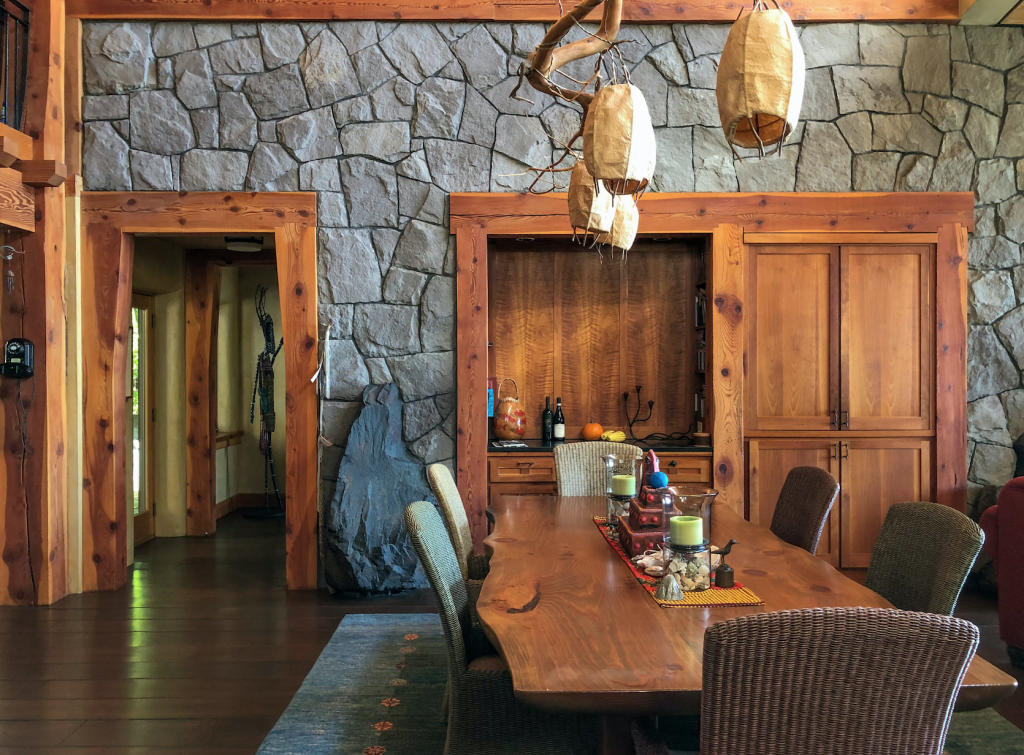
Designed for a single-family, Womb with a View is a curvilinear wood-clad residence overlooking the Pacific Ocean and the village of Cannon Beach, Oregon. The home offers a place of refuge, recovery, and rejuvenation with an interior environment that is both “spacious and cozy” with a variety of ceiling heights, interior wall surfaces of natural materials (wood, stone, and plaster) and focused views to the surrounding landscape. Through bands of clerestory windows, natural light brings the eclectic interior to life, even on the overcast days common to the Oregon coast. A 250-year-old Sitka Spruce anchors the layout of the home, serves as a shade canopy, and provides habitat for a multitude of coastal creatures.
Applauded by the jury for its care to interior details, textures, and delightful use of wood throughout, this treehouse beach cabin alludes a warmth that is especially inviting. There is a sweetness to this project that sings of love and reverence of nature. The conscious decisions to connect one with the natural world internally are clearly reflected in the design concept.
This year’s jury included:
- Judith Heerwagen, Ph.D., Award Committee Chair, US General Services Administration
- Bert Gregory, FAIA, LEED Fellow, Design Partner, Mithun
- Timothy Beatley, Ph.D., Teresa Heinz Professor of Sustainable Communities, School of Architecture at the University of Virginia
- Tenna Florian, AIA, LEED AP BD+C, Associate Partner, Lake | Flato
- Sonja Bochart, IIDA., LEED AP BD&C, WELL AP, Principal, Shepley Bulfinch
- Kenner Kingston, LFA, LEED AP BD+C O+M, President, Arch Nexus
- Erin Rovalo, Ph.D. Candidate, Certified Biomimicry Professional (CBP), LEED AP BD+C, Biophilic Design Support, ILFI
- Amanda Sturgeon, FAIA, LEED Fellow, Chief Executive Officer, International Living Future Institute
About the International Living Future Institute
The International Living Future Institute is an environmental NGO committed to catalyzing the transformation toward communities that are socially just, culturally rich and ecologically restorative. ILFI is premised on the belief that providing a compelling vision for the future is a fundamental requirement for reconciling humanity’s relationship with the natural world. ILFI operates the Living Building Challenge, the built environment’s most ambitious performance standard. It is a hub for many other visionary programs that support the transformation toward a living future. Learn more at http://www.living-future.org.
Thank you to The Kendeda Fund and our event sponsor, Interface, for supporting this year’s Stephen R. Kellert Biophilic Design Award.


